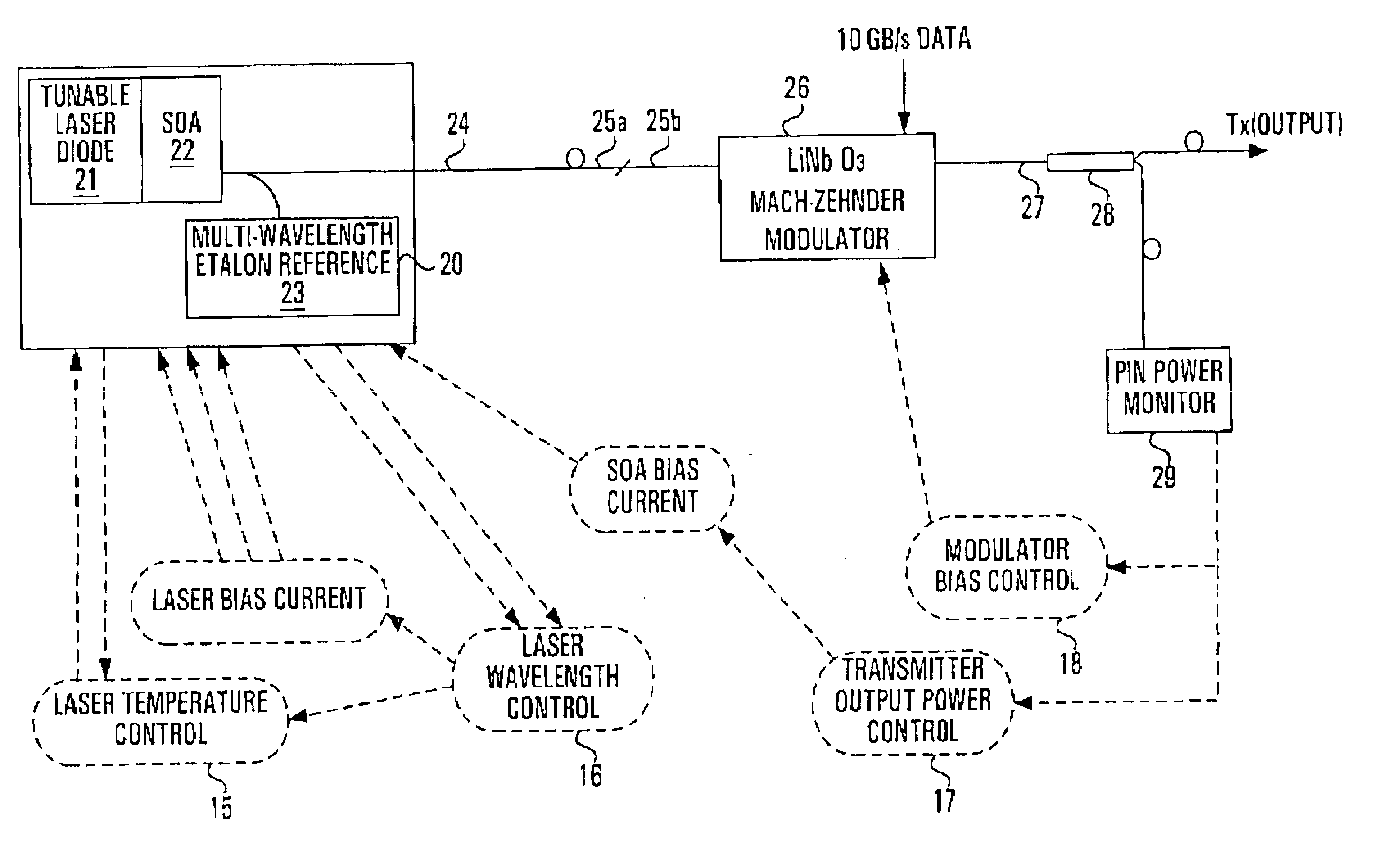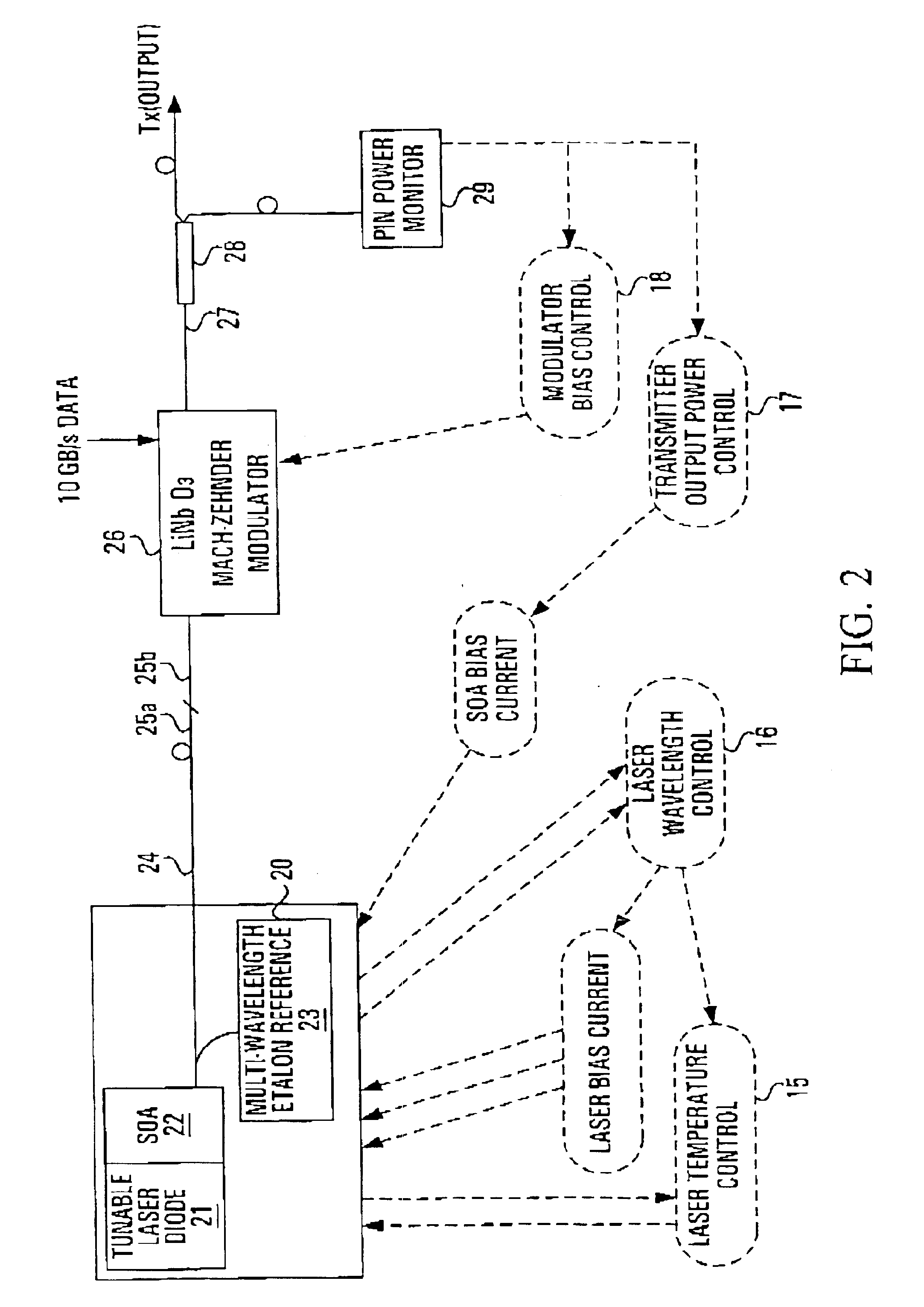Use of amplified spontaneous emission from a semiconductor optical amplifier to minimize channel interference during initialization of an externally modulated DWDM transmitter
- Summary
- Abstract
- Description
- Claims
- Application Information
AI Technical Summary
Benefits of technology
Problems solved by technology
Method used
Image
Examples
Embodiment Construction
FIG. 2 depicts the arrangement of a tunable laser transmitter suitable for use with the invention. A tunable laser module 20 comprises a tunable laser diode 21 and a semiconductor optical amplifier (SOA) 22. The laser module 20 also includes a multi-wavelength etalon reference 23. The laser module 20 is coupled into a polarization maintaining (PM) single mode fiber 24. An output end 25a of the PM single mode fiber is spliced into an input fiber 25b of an external modulator 26 with the same polarization orientation. At the output 27 of the modulator 26, a tap coupler 28 is used to tap off a portion (˜5%) of the transmitter output power to a single PIN power monitor (photodetector) 29 to monitor the output power. This photocurrent signal is used to close the mean power control loop. The remaining power then forms the transmitter output Tx.
The tunable laser diode 21 is a continuous wave (CW) laser source. For example, the laser diode 21 may comprise a three-section distributed feedback...
PUM
 Login to View More
Login to View More Abstract
Description
Claims
Application Information
 Login to View More
Login to View More - R&D
- Intellectual Property
- Life Sciences
- Materials
- Tech Scout
- Unparalleled Data Quality
- Higher Quality Content
- 60% Fewer Hallucinations
Browse by: Latest US Patents, China's latest patents, Technical Efficacy Thesaurus, Application Domain, Technology Topic, Popular Technical Reports.
© 2025 PatSnap. All rights reserved.Legal|Privacy policy|Modern Slavery Act Transparency Statement|Sitemap|About US| Contact US: help@patsnap.com



